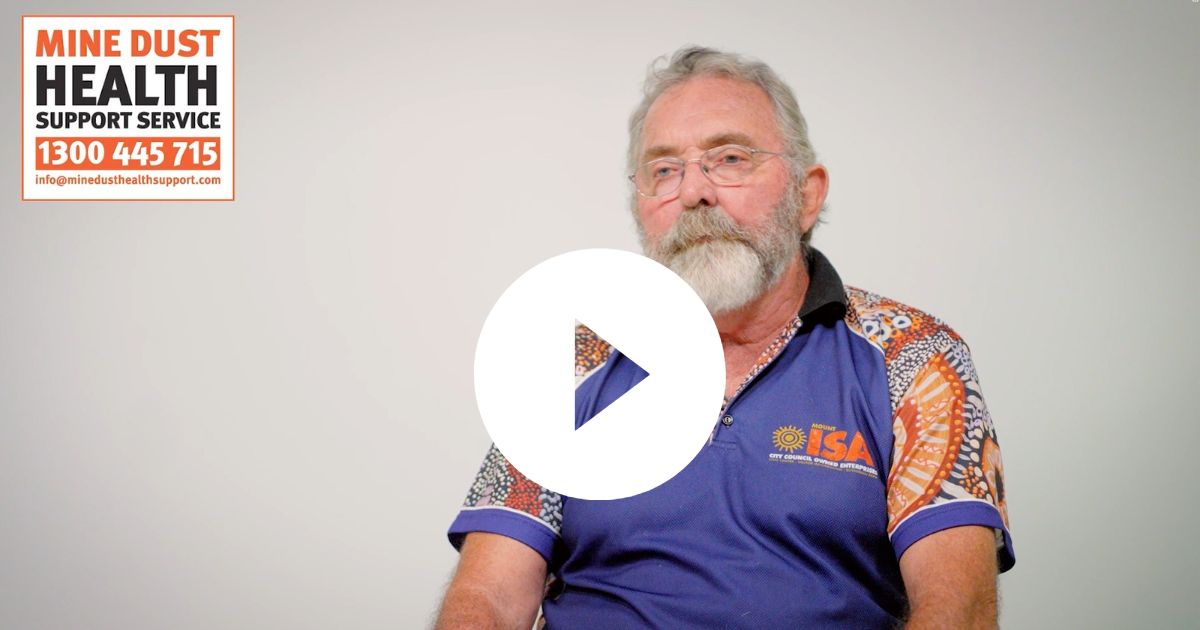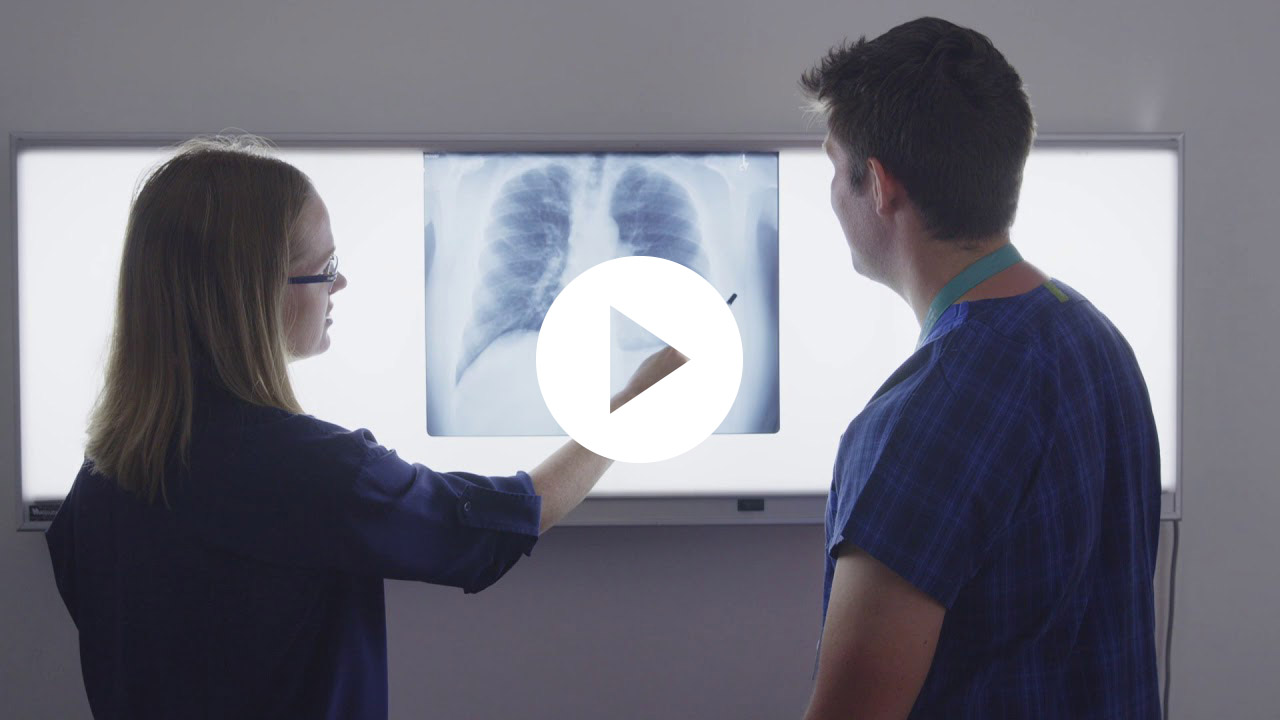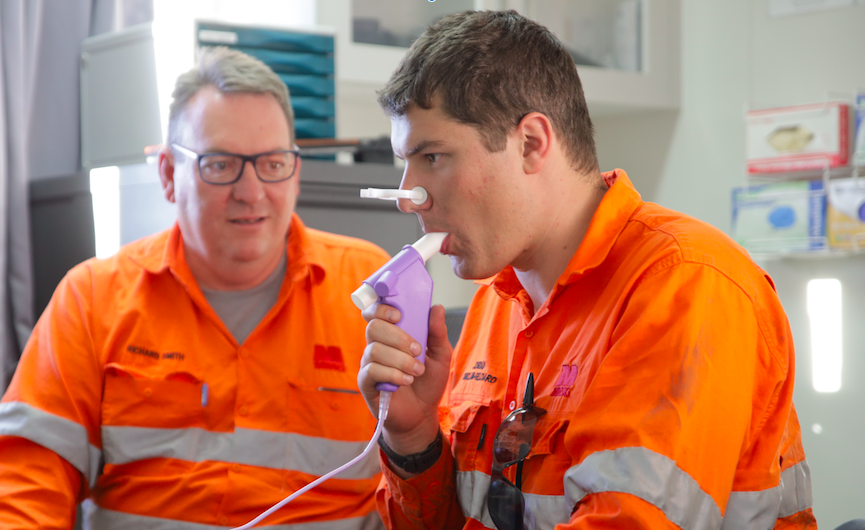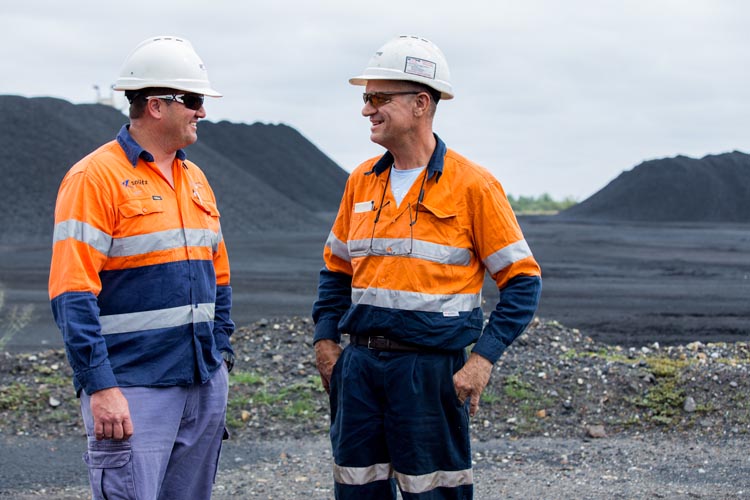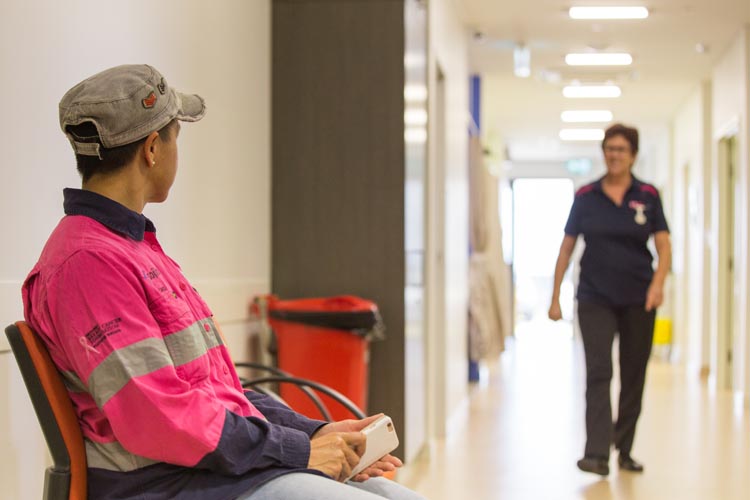Detection of MDLD
Are you a former or retired mine or quarry worker?
Phone 1300 445 715 to organise a free lung health check.
Steve Carson, a retired Queensland metalliferous miner, was diagnosed with a mine dust lung disease in 2021. In this video he shares his story and offers advice to other miners.
Learn more about how the retired and former worker assessment works here.
Mine dust lung diseases (MDLD) can take up to 10 years or more to develop, and even longer to produce noticeable symptoms.
Prevention is the best defence, however, identifying the disease in its early stages can prevent it from progressing to a point where it can seriously impact on your career and quality of life.
On this page you will find information about respiratory health examinations to detect mine dust lung disease, including the Coal Mine Workers’ Health Scheme and respiratory health surveillance for mineral mine and quarry workers.
Respiratory health examinations
The respiratory health examinations for coal, mineral mine and quarry workers have been aligned and strengthened. This is to ensure that all mine and quarry workers in Queensland receive the same quality lung checks. Some of the changes include:
- improvements to chest X-rays - higher quality standards in line with international best practice, with X-rays dual-read to the ILO International Classification of Radiographs of Pneumoconioses
- better training for health care professionals that combine experience and qualifications
- new standards for spirometry (lung function) testing and training for spirometry personnel
- optional respiratory assessments for retiring workers
- free lung checks for retired and former workers paid for by Resources Safety & Health Queensland.
The respiratory health examinations includes:
- Lung function test (spirometry)
- Chest X-ray
Lung function test (spirometry)
Spirometry is a standard test used to detect conditions that affect your lung function, like chronic obstructive pulmonary disease (COPD) and asthma. To take a spirometry test, you breathe forcefully into a small machine called a spirometer.
Chest X-ray
As most early cases of simple mine dust lung disease show no symptoms, regular chest X-rays are crucial to identifying the disease before it progresses.
The doctor will refer you to a radiology clinic to perform specialist chest X-rays for the detection of mine dust lung disease. The clinic must meet the specific standards and qualifications set by Resources Safety & Health Queensland.
Your chest X-ray is then examined against the International Labour Organization (ILO) standard by at least two Australian radiologists that have passed additional training delivered by the United States National Institute for Occupational Safety and Health (called B-readers).
ILO standards
The International Labour Organization (ILO) has set an international standard to describe and code features in chest X-rays that could indicate pneumoconiosis.
The radiologists will compare your X-ray with standard images which show different levels of abnormalities in patients with possible pneumoconiosis. It helps your doctor determine if an abnormality exists that should be investigated further.
Clinical pathways guideline
To screen for abnormalities, doctors use a combination of chest X-ray and lung function test results. Further specialist tests are then required to investigate screening results if an abnormality is detected.
A standardised clinical pathways guideline (PDF, 702.0 KB) has been developed for doctors to ensure a consistent approach to follow up and referral for screening tests with abnormal results. Specialist tests commonly include a high resolution computed tomography scan, advanced lung function tests and review by respiratory physician.
Following these further specialist tests and reviews, a diagnosis can be made.
Visit your doctor or employer’s doctor immediately if you have concerns about your health.
Completing the examinations
Once all the required test results are compiled, the doctor reviews the records and completes the examination.
If you are a coal mine worker, this is the Appointed Medical Adviser (AMA) who will send the Health Surveillance Unit of Resources Safety & Health Queensland:
- the completed health assessment form
- all medical reports (including chest X-ray reports, spirometry report, CT scan report if required) for filing on your permanent health record.
The AMA will also provide you and your employer a copy of your health assessment report (section 4 of the health assessment form). You can request copies of your past health assessments from either the AMA or Resources Safety & Health Queensland.
If you are a mineral mine or quarry worker, the Appropriate Doctor will provide the health surveillance report to you and the site senior executive.
Your AMA or Appropriate Doctor are also required to keep a full copy of each examination they complete.
Exit assessment
Your employer needs to offer you the opportunity to have a respiratory health examination when you retire, if:
- you have worked in the industry for at least three years
and - it has been three years since your last routine health check.
The exit assessment must be completed within a six-month period starting three months before and extending to three months after your retirement date.
The exit assessment consists of a respiratory function test and chest X-ray.
Your employer must organise and pay for this assessment.
Retired and former workers
Resources Safety & Health Queensland (RSHQ) provide free lung health checks for former and retired Queensland mine and quarry workers. You can qualify for a free assessment if all of the following apply:
- you were a coal mine, mineral mine, or quarry worker for at least 3 years in total over your lifetime, with at least 6 months of this work experience in Queensland.
- you have permanently stopped being a coal mine, mineral mine or quarry worker.
- it has been at least 5 years since your most recent assessment, or a doctor has recommended a sooner assessment, as shown in your last health assessment record or a medical certificate)
For assistance or to arrange a free lung health check:
- contact the Mine Dust Health Support Service on 1300 445 715 or at info@minedusthealthsupport.com, or
- complete the former worker assessment application form and send to FormerWorker@rshq.qld.gov.au.
If eligible for a free lung health check, RSHQ will let you know the available approved medical providers, which may be located at fixed clinics or on-board HEART 5, Heart of Australia’s mobile health unit. To stay up to date on HEART 5’s upcoming dates and locations, please visit Heart of Australia’s website.
When travelling to and from your appointment(s) as part of your assessment, RSHQ can help with travel expenses, in accordance with the Travel expenses policy. Travel expense reimbursements can be made by completing the Travel expense claim form. For more information on the Travel expenses policy, please contact the Health Surveillance Unit on 07 3818 5420.
Taking charge of your health
Whether working or retired, you should visit your doctor or employer’s medical adviser immediately if you have concerns about your respiratory health.
For assistance or to arrange a free lung check for retired and former workers, contact us on 1300 445 715 or info@minedusthealthsupport.com.
Coal Mine Workers’ Health Scheme
The Coal Mine Workers’ Health Scheme protects the long-term health of Queensland coal miners. It requires that every coal mine worker completes a health assessment at least once every five years.
Formerly known as the Coal Board Medical, it provides early diagnosis and intervention for diseases like coal workers’ pneumoconiosis (CWP) and silicosis. It is also used to determine your fitness for work.
Your employer must arrange and pay for your health assessments, including any additional tests or follow-up investigations of abnormal screening results.
All Queensland coal mine workers employed for a task other than a ‘low risk’ task will receive a health assessment:
- on entry to the industry or change in employer
- at least every five years while employed in the industry
- at retirement (on a voluntary basis).
While a new health assessment is required on change in employer, chest X-ray or spirometry tests may not need to be repeated if previous examinations are still in date, and the Appointed Medical Adviser (AMA) decides repeat tests are not necessary.
You might also be required to have a health assessment if your employer’s AMA (previously called Nominated Medical Adviser – NMA) decides it is necessary (e.g. if on-site monitoring indicates high respirable dust levels).
Eligible former coal mine workers are able to obtain a respiratory health assessment through Resources Safety & Health Queensland (RSHQ).
Who is my Appointed Medical Adviser (AMA)?
The AMA is a doctor appointed by your employer to undertake, manage and supervise Coal Mine Workers’ Health Scheme health assessments. These doctors must be appointed by employers from the list of doctors approved by Resources Safety & Health Queensland (RSHQ). They are the only person authorised to complete Section 4 of your health assessment form and are responsible for ensuring that the results are reported.
Your health assessment
Your health assessment will be conducted by your employer’s AMA, or another qualified doctor under the supervision of the AMA.
Your health assessment form comes in 4 sections, each completed by a different person.
| Completed by | Includes | |
|---|---|---|
| Section 1 | Employer |
|
| Section 2 | You |
|
| Section 3 | AMA or examining doctor |
|
| Section 4 Your health assessment report | AMA |
|
Respiratory health surveillance for mineral mine and quarry workers
Amendments to the Mining and Quarrying Safety and Health Regulation 2017 require that Queensland mineral mine and quarry workers undertake periodic respiratory health surveillance to identify any changes in lung function or the early signs of lung disease.
The Site Senior Executive (SSE) will arrange respiratory health surveillance to be undertaken prior to a person commencing work in the industry and then at least once every five years. These are coordinated by the Appropriate Doctor.
New medicals are not necessarily required when changing sites or employers, unless the risk has changed.
Your employer must pay for the costs of medicals and any associated travel expenses.
As of 1 September 2022, SSEs must ensure all workers have had the required respiratory health surveillance.
The SSE may, through a risk assessment that considers current and previous exposure, determine that respiratory health surveillance is not required if the worker’s exposure to respiratory hazards is so minimal that it can be effectively managed without respiratory health surveillance. This same mechanism applies under the Coal Mine Workers’ Health Scheme.
Eligible former mineral mine and quarry workers are able to obtain a respiratory health assessment through Resources Safety & Health Queensland (RSHQ).
Who is my Appropriate Doctor?
The Appropriate Doctor is appointed by your SSE to undertake, manage and supervise health surveillance, including respiratory health surveillance.
Resources Safety & Health Queensland has set out the specific qualifications and experience that an Appropriate Doctor must meet. They are the only person authorised to complete the health surveillance report.
